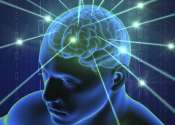Study shows cyclic breathing technique more effective in reducing stress than mindfulness meditation
At team of researchers at Stanford University reports evidence that people who engage in cyclic sighing breathing exercises see a greater reduction in stress than those engaging in mindfulness meditation. In their paper published ...









